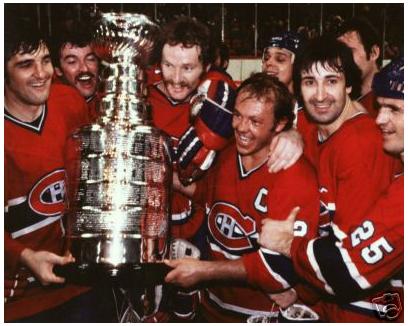
by Coach K, AllHabs.net
SAINT-LAZARE, QC – For decades, it has been a mainstay on the Canadiens’ roster. From the Rocket to the Roadrunner, from “Le Demon Blond” to Russ Courtnall. Montreal Canadiens fans have always been enamoured by speedy players. It’s the principal reason for our past successes, and looking forward, may be the very reason why the Habs won’t win a Stanley Cup for quite some time.

While the Canadiens have always had quick players on their roster, they have, for the most part, also had a nucleus of big players to take care of business in the defensive zone. In the 50’s, while Maurice Richard, Elmer Lach and Hector “Toe” Blake mesmerized the Forum faithful with their speed and skill, there were Emile “Butch” Bouchard and Doug Harvey on the backend. In the 60’s, our offense came from “Boom Boom” Geoffreon, Jean Beliveau, Henri Richard and Dickie Moore, and we had J.C. Tremblay and Tom Johnson holding the fort. And in the 70’s, with the likes of Guy Lafleur, Jacques Lemaire and Pierre Larouche, we had the Big 3 of Serge Savard, Larry Robinson and Guy Lapointe keeping the opposition at bay.
Canadiens’ General Managers of the past like Frank Selke and Sam Pollack, arguably two of the best executives in NHL history, laid the blueprint for success in this league, but the GMs of the 80s and 90s chose a different route. That leads us to the Montreal Canadiens of today. Gone are the gargantuas on defense that could seemingly move mountains from the slot, replaced with puck moving defenseman and veterans in the latter stages of their careers. On a team that, in decades past, always gave younger players a chance to flourish, they have reduced themselves to being stuck with second rate talent such as hand-me-downs, problem players and salary dumps from other organizations.
Having speedy players definitely has its advantages, when you look at things from an offensive standpoint. Generating speed in transition is essential to having an effective offense. While this holds true, too much speed and a lack of size and grit often results in an inability to effectively get the puck out of the defensive zone, and starting the transition in the first place.
With a coach like Jacques Martin, you need to have those big, physical defensemen with the ability to separate opposing players from the puck physically and allow for your team’s transition offense to take over. If you don’t, your team tends to spend an exorbitant amount of time in the defensive zone, thus tiring them out and killing any offensive opportunities they can normally generate.

Everyone loved those exciting end-to-end rushes by Larry Robinson, Chris Chelios and Serge Savard. But in today’s game, with the advances in defensive schemes and coverages, they have become a lost art. This is the same reason why a player like Scott Gomez cannot get anything done when rushing the puck from his own zone. Teams are trained to take away the mid-ice skating lane and to force players to the half wall, eliminating the scoring threat of the rush.
While organizations like the Philadelphia Flyers are building teams according to a 40 year old Habs blueprint, the Montreal Canadiens have lost their own identity. GM Pierre Gauthier continues the fine tradition of drafting smallish players, who’s only real talent is their skating ability, in an attempt to build a team that he thinks may resemble the Russian teams of the 1970’s.
It’s time to get past the Summit Series, and get back to our roots. It’s time to reclaim the blueprint, being used by other general managers, and make it our own. It’s time, once again, that the Montreal Canadiens became “Les Glorieux”!
(Feature image courtesy hockeysgreatestlegends.com)
I agree 100%.
Comments are closed.